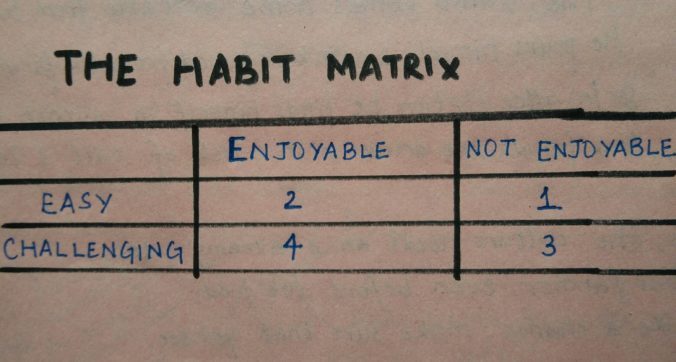Today, I would like to share an interesting questionnaire with you. It is called the ‘Proust Questionnaire’ named after the French writer, Marcel Proust.
Proust believed that foremost, a person must develop a thorough understanding of his own self. Only then would he be able to understand others.
He developed a list of questions that he felt would help people to reflect upon their own present beliefs and understand their true self.
While some questions might require a few moments of reflection, most others are best answered spontaneously.
Today, I would like to share my answers to the Questionnaire with you. I hope by the end of it, you also challenge yourself to answer the Proust Questionnaire.
My Answers to the Proust Questionnaire:
Q: What is your idea of perfect happiness?
A: Having the wisdom to realize how perfect each moment is.
Q: What is your greatest fear?
A: Living an unfulfilled life devoid of meaning.
Q: What is the trait you most deplore in yourself?
A: The tendency to procrastinate and not take initiative.
Q: What is the trait you most deplore in others?
A: Indifference
Q: Which living person do you most admire?
A: My Grandmother
Q: What is your greatest extravagance?
A: Flying in Airplanes.
Q: What is your current state of mind?
A: An excitement that comes with the gradual unfolding of a heart that’s ready to give and receive as dictated by the Universe.
Q: What do you consider the most overrated virtue?
A: Idealism
Q: On what occasion do you lie?
A: When I am not ready to share my state of mind.
Q: What do you most dislike about your appearance?
A: I have a frown on my forehead at all times. It is involuntary and unintentional. I wish I could change that.
Q: Which living person do you most despise?
A: —
Q: What is the quality you most like in a man?
A: The quality of taking responsibility.
Q: What is the quality you most like in a woman?
A: Compassion
Q: Which words or phrases do you most overuse?
A: Theek hai na yaar (It is okay my friend) usually to pacify a friend who is struggling with a narrow perspective in that moment.
Q: What or who is the greatest love of your life?
A: The gift of life itself.
Q: When and where were you happiest?
A: At all points in my life when I embodied the spirit of a child.
Q: Which talent would you most like to have?
A: The talent of singing.
Q: If you could change one thing about yourself, what would it be?
A: I would like to have a better sense of humor.
Q: What do you consider your greatest achievement?
A: To have always listened to my heart.
Q: If you were to die and come back as a person or a thing, what would it be?
A: A Dolphin.
Q: Where would you most like to live?
A: Amid the chirrup of birds, in nature, in a community my friends and I build with our own hands.
Q: What is your most treasured possession?
A: My body.
Q: What do you regard as the lowest depth of misery?
A: When a person ignores his ability to help. (Himself or someone else in need)
Q: What is your favorite occupation?
A: Tidying things up.
Q: What is your most marked characteristic?
A: Honesty
Q: What do you most value in your friends?
A: They care for my growth just as much as their own.
Q: Who are your favourite writers?
A: Kahlil Gibran, Gregory David Roberts, George Orwell
Q: Who is your hero of fiction?
A: Swami (From Malgudi Days)
Q: Which historical figure do you most identify with?
A: M. K. Gandhi
Q: Who are your heroes in real life?
A: Anyone who does what truly matters to them when nobody is watching.
Q: What are your favourite names?
A: Maya, Sreenivasan
Q: What is it that you most dislike?
A: Loss of Freedom
Q: What is your greatest regret?
A: Not apologizing at the right time.
Q: How would you like to die?
A: While working, as I am engaged in doing something I care about.
Q: What is your motto?
A: Be the change you wish to see in the world.
Hope you find time to answer these questions for yourself. It is a great self reflection activity that doesn’t take much of your time.
Good luck with finding your answers 🙂








